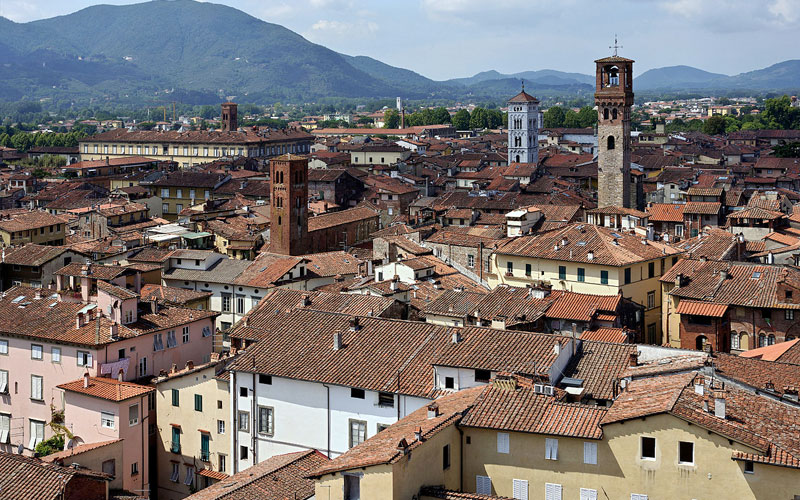Lucca was founded by the Etruscans (there are traces of an earlier Ligurian settlement) and became a Roman colony in 180 BC. The rectangular grid of its historical centre preserves the Roman street plan, and the Piazza San Michele occupies the site of the ancient forum. Traces of the amphitheatre still may be seen in the Piazza dell'Anfiteatro.
Walls, streets, and squares
The walls encircling the old town remain intact, even as the city expanded and modernized, unusual for cities in the region. Initially, built as a defensive rampart, once the walls lost their military importance, they became a pedestrian promenade, the Passeggiata delle Mura Urbane, a street atop the walls linking the bastions. It passes through the Bastions of Santa Croce, San Frediano, San Martino, San Pietro/Battisti, San Salvatore, La Libertà/Cairoli, San Regolo, San Colombano, Santa Maria, San Paolino/Catalani, and San Donato; and over the gates (Porte): San Donato, Santa Maria, San Jocopo, Elisa, San Pietro, and Sant'Anna. Each of the four principal sides of the structure is lined with a different tree species than the others.
Churches
There are many medieval, a few as old as the eighth century, basilica-form churches with richly arcaded façades and campaniles
• Duomo di San Martino: St Martin's Cathedral
• San Michele in Foro: Romanesque church
• San Giusto: Romanesque church
• Basilica di San Frediano







